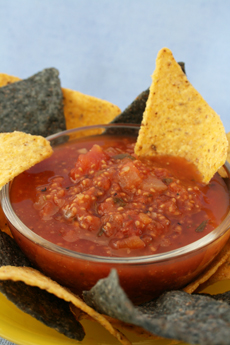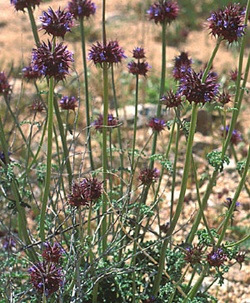IntroductionSalba isn’t the name of a dance although it may have you dancing. Don’t chuckle, but the plant Salvia hispanica, popularly known as chia—the same chia that hits the airwaves every holiday season in the form of Chia Pet gifts—is a superfood, like açaí, blueberry, montmorency cherry and pomegranate. Salvia hispanica is native to Mexico. The genus Salvia is the largest genus of plants in the mint family, Lamiaceae. The Salvia genus also includes all the varieties of sage. Those ch-ch-ch-chia sprouts that are grown and giggled at each year are among the most nutritious foods in the world. Chia, a whole grain, was cultivated by the Aztecs in pre-Columbian times, and was so valued that it was given as an annual tribute by the people to their rulers. The word chia is derived from the Aztec Nahuatl* word chian, meaning oily. The Mexican state of Chiapas is derived from the Nahuatl for chia water or chia river. Salba is a name trademarked by a company that understands the potential of the grain, gauged the marketing potential of a name other than ch-ch-ch-chia (as the name Kamut was trademarked—an easier sell than khorasan wheat) and cultivated a registered variety, grown only in Peru, which ensures strict nutritional consistency *Nahuatl was the language of the Aztecs; their descendants, 1.5 million Nahua people, mostly live in Central Mexico and still speak the language (in many dialects).
And, it tastes great! So if anyone in the household wants to focus on healthy eating, those who don’t give a hoot (most kids, teens and adults under 40) will be fighting over these tasty Salba Smart tortilla chips, pretzels and organic salsa. The line will soon expand to include potato chips, flatbreads, bars, cereals and breads made with Salba. We’ll get to them in a minute (or skip to Page 3), but first, a word about the health benefits of Salba/chia.
Continue To Page 2: The Health Benefits Of Salba/Chia
Recent Articles From Our NutriNibbles™ News Feed:Subscribing notifies you whenever
there are
|

The Nibble Blog
The Latest Products, Recipes & Trends In Specialty Foods
The gourmet guide you’ve been waiting for. New food adventures are served up daily. Check it out!

Food Glossary
Our Food Directories Are "Crash Courses" In Tasty Topics
Your ultimate food lover’s dictionary packed full of information and historical references. Take a look!

Food History
Let the journey begin!
Learn about the history Of 1,000+ Favorite Foods & Beverages Let’s explore the history of your favorie goods together.Let the journey begin!


 Salvia hispanica. Photo by courtesy of Wikimedia Commons.
Salvia hispanica. Photo by courtesy of Wikimedia Commons.